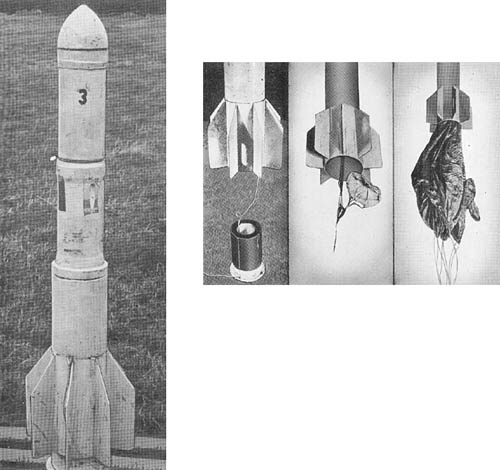
This is an antiaircraft rocket projectile containing a parachute to which is attached a length of cable, designed for use in large numbers to form a barrage against low flying aircraft. The projectile consists of four parts: nose piece, propellant chamber, parachute housing, and cable housing and tail unit.
The nose piece is ogival in shape and screws onto the forward end of the propellant chamber. It contains a TNT destructive charge, weighing approximately 2.3 pounds, and initiated by means of a delay fuze connected to the propellant chamber.
This is a steel cylinder closed at the forward end and threaded externally at the rear end to fit into the parachute housing. Four drillings in the forward end of the parachute housing form the venturi through which the propelling gases escape.
At the forward end of the parachute housing is a TNT charge, weighing approximately 2 pounds. Below this charge are located the main and pilot parachutes which are attached to the forward end of the cable. The cable housing is constructed in two parts, the lower of which remains on the ground when the rocket is launched. The upper portion has a finned tail unit which fits over the lower portion of the cable housing. The 1/8-inch cable, attached at its forward end to the parachute, is coiled the length of the cable housing and passes through a hole in the lower portion to a ground anchor.
After launching, the projectile continues upwards until the whole of the cable has been uncoiled; the parachute is then pulled out of the parachute housing and remains suspended in the air until dragged to earth by the weight of the cable. The rocket casing continues in flight until a delay igniter initiates the destructive charge in the nose of the projectile.
SPECIFICATIONS
| Total weight (approx.) | 150 lbs. | |
| Weight of parachute housing (containing parachutes and H.E. charge) | 28 lbs., 1 oz. | |
| Weight of fins and cable housing | 90 lbs, 4 ozs. | |
| Weight of nose (containing H.E. charge) | 4 lbs., 12 ozs. | |
| Weight of rocket motor unit | 27 lbs., 11 ozs. | |
| Weight of propellant charge | 11 lbs., 10 ozs. | |
| Length of projectile (overall) | 58.2 ins. | |
| External diameter (maximum) | 7.09 ins. | |
| External diameter of motor tube | 5.51 ins. | |
| Internal diameter of motor tube | 5.2 ins. | |
| Length of propellant charge | 11.7 ins. | |
| Length of cable (approx.) | 950 yds. | |
| Diameter of main parachute | 11 ft. | |
| Diameter of pilot parachute | 6 ins. |
German: p. 356.1 (May 1, 1945)
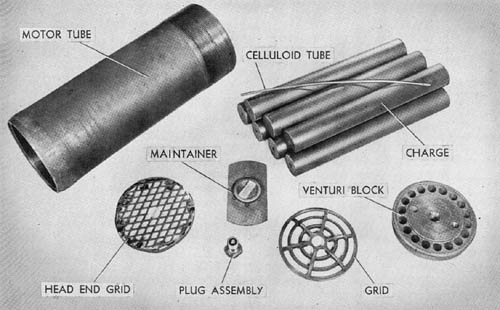
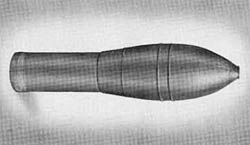
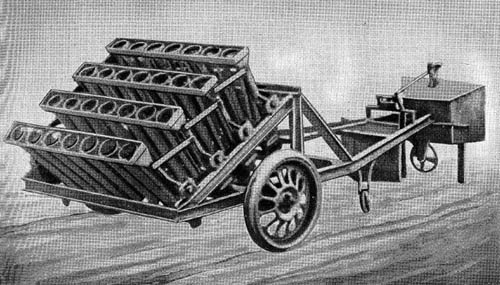
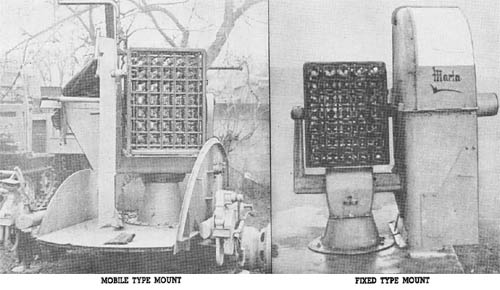
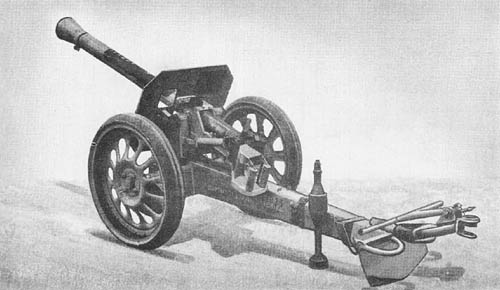
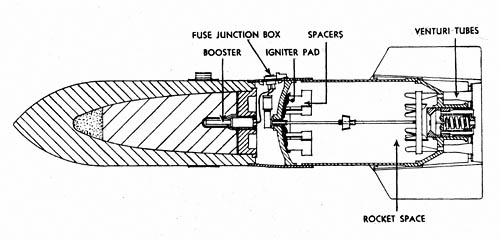
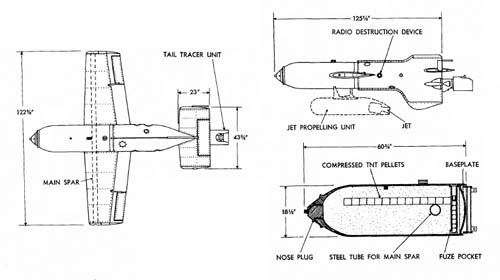
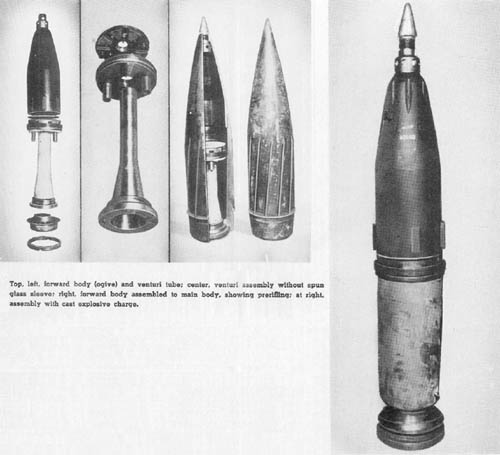
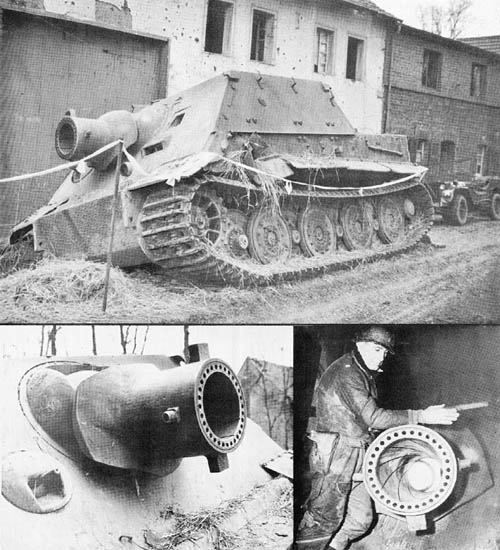
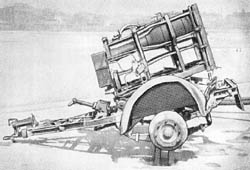 This rocket projector very closely resembles the
This rocket projector very closely resembles the